Cyprus, formally the Republic of Cyprus, is an Eurasian island nation in the Eastern Mediterranean, east of Greece, south of Turkey, west of Syria and north of Egypt. It is the third greatest island in the Mediterranean Sea and one of its most ubiquitous voyager ends of the line. A propelled elevated-pay economy with an extremely towering Human Development Index, the Republic of Cyprus was an organizing part of the Non-Aligned Movement until it joined the European Union on 1 May 2004.
The soonest known human movement on the island goes back to around the 10th thousand years BC. Archaeological stays from this period incorporate the decently-protected Neolithic village of Khirokitia, which has been announced a World Heritage Site by UNESCO, as well as the Tombs of the Kings. Cyprus is home to a percentage of the eldest water wells in the planet, and is the locale of the soonest known illustration of catlike training. At a vital area in the Middle East,Cyprus has been involved by some major forces, incorporating the domains of the Hittites, Assyrians, Egyptians, Persians, Rashiduns, Umayyads, Lusignans, Venetians and Ottomans. Settled by Mycenean Greeks in the 2nd thousand years BC, the island moreover encountered long times of Greek run under the Ptolemies and the Byzantines. In 333 B.C., Alexander of Macedon vanquished the island from the Persians. The Ottoman Empire prevailed over the island in 1571 and it stayed under Ottoman control for over three centuries. It was set under British organization in 1878 until it was conceded autonomy in 1960, coming to be a part of the Commonwealth the taking after year.
In 1974, accompanying 11 years of intercommunal roughness, utilizing an endeavored rebellion by Greek Cypriot patriots and components of the Greek military junta with the point of attaining enosis (union of the island with Greece) as an affection, Turkey attacked and involved the northern bit of the island, bringing about the part of the island, Turkey's target since 1955.The intercommunal brutality and resulting Turkish intrusion accelerated the removal of countless many Cypriots and the foundation of a particular Turkish Cypriot political substance in the north. The aforementioned occasions and the coming about political scenario are matters of continuous question.
The Republic of Cyprus has by law sway over the whole island of Cyprus and its encompassing waters excluding little divides, Akrotiri and Dhekelia, that are distributed by bargain to the United Kingdom as sovereign military bases. The Republic of Cyprus is absolute parceled into two prevailing parts; the zone under the adequate control of the Republic of Cyprus, embodying in regards to 59% of the island's zone, and the Turkish-regulated territory in the north calling itself the Turkish Republic of Northern Cyprus, coating in regards to 36% of the island's zone and distinguished just by Turkey.
The soonest known human movement on the island goes back to around the 10th thousand years BC. Archaeological stays from this period incorporate the decently-protected Neolithic village of Khirokitia, which has been announced a World Heritage Site by UNESCO, as well as the Tombs of the Kings. Cyprus is home to a percentage of the eldest water wells in the planet, and is the locale of the soonest known illustration of catlike training. At a vital area in the Middle East,Cyprus has been involved by some major forces, incorporating the domains of the Hittites, Assyrians, Egyptians, Persians, Rashiduns, Umayyads, Lusignans, Venetians and Ottomans. Settled by Mycenean Greeks in the 2nd thousand years BC, the island moreover encountered long times of Greek run under the Ptolemies and the Byzantines. In 333 B.C., Alexander of Macedon vanquished the island from the Persians. The Ottoman Empire prevailed over the island in 1571 and it stayed under Ottoman control for over three centuries. It was set under British organization in 1878 until it was conceded autonomy in 1960, coming to be a part of the Commonwealth the taking after year.
In 1974, accompanying 11 years of intercommunal roughness, utilizing an endeavored rebellion by Greek Cypriot patriots and components of the Greek military junta with the point of attaining enosis (union of the island with Greece) as an affection, Turkey attacked and involved the northern bit of the island, bringing about the part of the island, Turkey's target since 1955.The intercommunal brutality and resulting Turkish intrusion accelerated the removal of countless many Cypriots and the foundation of a particular Turkish Cypriot political substance in the north. The aforementioned occasions and the coming about political scenario are matters of continuous question.
The Republic of Cyprus has by law sway over the whole island of Cyprus and its encompassing waters excluding little divides, Akrotiri and Dhekelia, that are distributed by bargain to the United Kingdom as sovereign military bases. The Republic of Cyprus is absolute parceled into two prevailing parts; the zone under the adequate control of the Republic of Cyprus, embodying in regards to 59% of the island's zone, and the Turkish-regulated territory in the north calling itself the Turkish Republic of Northern Cyprus, coating in regards to 36% of the island's zone and distinguished just by Turkey.
Geography
Cyprus is the third greatest island in the Mediterranean Sea, after the Italian islands of Sicily and Sardinia (both regarding zone and inhabitant total). It is additionally the planet's 81st greatest by range and planet's 49th greatest by citizenry. It measures 240 kilometres (149 mi) long from closure to end and 100 kilometres (62 mi) wide at its greatest focus, with Turkey 75 kilometres (47 mi) to the north. It lies between scopes 34° and 36° N, and longitudes 32° and 35° E.
Other neighbouring domains could be Syria and Lebanon to the east (105 kilometres (65 mi) and 108 kilometres (67 mi), separately), Israel 200 kilometres (124 mi) to the southeast, Egypt 380 kilometres (236 mi) to the south, and Greece to the northwest: 280 kilometres (174 mi) to the humble Dodecanesian island of Kastelorizo (Megisti), 400 kilometres (249 mi) to Rhodes, and 800 kilometres (497 mi) to the Greek terrain.
Other neighbouring domains could be Syria and Lebanon to the east (105 kilometres (65 mi) and 108 kilometres (67 mi), separately), Israel 200 kilometres (124 mi) to the southeast, Egypt 380 kilometres (236 mi) to the south, and Greece to the northwest: 280 kilometres (174 mi) to the humble Dodecanesian island of Kastelorizo (Megisti), 400 kilometres (249 mi) to Rhodes, and 800 kilometres (497 mi) to the Greek terrain.
The physical alleviation of the island is overwhelmed by two mountain extends, the Troodos Mountains and the more diminutive Kyrenia Range, and the centermost plain they incorporate, the Mesaoria. The Troodos Mountains blanket the majority of the southern and western shares of the island and elucidate harshly half its region. The most elevated focus on Cyprus is Mount Olympus at 1,952 m (6,404 ft), spotted in the middle of the Troodos reach. The slender Kyrenia Range, enlarging along the northern coastline, possesses generously less zone, and heights are lower, arriving at a most extreme of 1,024 m (3,360 ft).
Geopolitically, the island is subdivided into four essential fragments. The Republic of Cyprus, the universally distinguished administration, possesses the southern two-thirds of the island (59.74%). The Turkish Republic of Northern Cyprus possesses the northern third (34.85%) of the island and is distinguished just by Turkey, as it comprises of the Turkish-possessed ranges. The United Nations-regulated Green Line is a support zone that disconnects the two and blankets 2.67% of the island. Ultimately, two bases under British sway are spotted on the island: Akrotiri and Dhekelia, coating the remaining 2.74%.
Geopolitically, the island is subdivided into four essential fragments. The Republic of Cyprus, the universally distinguished administration, possesses the southern two-thirds of the island (59.74%). The Turkish Republic of Northern Cyprus possesses the northern third (34.85%) of the island and is distinguished just by Turkey, as it comprises of the Turkish-possessed ranges. The United Nations-regulated Green Line is a support zone that disconnects the two and blankets 2.67% of the island. Ultimately, two bases under British sway are spotted on the island: Akrotiri and Dhekelia, coating the remaining 2.74%.
Biodiversity
Sharp distinctions in height on distinctive parts of the island donate to dissimilar climatic conditions, accelerating a mixture of dissimilar natural surroundings for a novel show of fauna and vegetation. The amount of species and sub-species of wild plant in Cyprus is probably in the thousands; a large number are endemic.
Natural life might be viewed in Troodos Mountains, the Larnaca and Akrotiri salt bays, and Akamas National Park. The Cyprus mouflon, a national image, is secured and could be perceived in Paphos timberlands towards the Troodos Mountains. In ancient times the island was home to both a dwarf hippopotamus, the Cypriot Pygmy Hippopotamus (H. minor), and a pymgy elephant, the Cyprus Dwarf Elephant (E. cypriotes). The Ayia Napa Sea Monster is a cryptid, which as per neighborhood legend is a legendary ocean creature of Greek mythology, the Scylla.
Natural life might be viewed in Troodos Mountains, the Larnaca and Akrotiri salt bays, and Akamas National Park. The Cyprus mouflon, a national image, is secured and could be perceived in Paphos timberlands towards the Troodos Mountains. In ancient times the island was home to both a dwarf hippopotamus, the Cypriot Pygmy Hippopotamus (H. minor), and a pymgy elephant, the Cyprus Dwarf Elephant (E. cypriotes). The Ayia Napa Sea Monster is a cryptid, which as per neighborhood legend is a legendary ocean creature of Greek mythology, the Scylla.
Climate
Cyprus has a subtropical atmosphere – Mediterranean and Semi-bone-dry sort (in the north-eastern part of island) – consistent with Köppen atmosphere grouping signes Csa and Bsh, with exceptionally mellow winters (on the coast) and warm to sultry summers. Snow is plausible just in the Troodos Mountains in the centermost part of island. Sprinkle happens basically in winter, with summer being usually dry.
Cyprus has the warmest atmosphere (and warmest winters) in the Mediterranean part of the European Union. The normal yearly temperature on the coast is around 24 °C (75 °F) throughout the day and 14 °C (57 °F) around evening time. Ordinarily – summer's/holiday flavor keeps up around 8 months, starts in April with normal temperatures of 21–23 °C (70–73 °F) throughout the day and 11–13 °C (52–55 °F) around evening time, closes in November with normal temperatures of 22–23 °C (72–73 °F) throughout the day and 12–14 °C (54–57 °F) around evening time, granted that likewise in remaining 4 months temperatures off and on again surpasses 20 °C (68 °F). Right around all urban areas in the Mediterranean part of the European Union, Limassol has the warmest winters, in the period January–February normal temperature is 17–18 °C (63–64 °F) throughout the day and 8–9 °C (46–48 °F) during the evening, in other waterfront areas in Cyprus is usually 16–17 °C (61–63 °F) throughout the day and 7–9 °C (45–48 °F) during the evening. In March and December in Limassol normal temperatures is 19–20 °C (66–68 °F) throughout the day and 10–11 °C (50–52 °F) around evening time, in other beachfront areas in Cyprus is ordinarily 17–19 °C (63–66 °F) throughout the day and 8–11 °C (46–52 °F) around evening time. Center of Spring is smoking – in July and August on the coast the normal temperature is normally around 33 °C (91 °F) throughout the day and around 23 °C (73 °F) around evening time (inside the island, in the high countries normal temperature surpasses 35 °C (95 °F)) while in the June and September on the coast the normal temperature is more often than not around 30 °C (86 °F) throughout the day and around 20 °C (68 °F) during the evening. Extensive changes in temperature are uncommon. Temperatures inside the island are more stringent, with colder winters and more smoking summers contrasted and the bank of the island.
Normal yearly temperature of ocean is 21–22 °C (70–72 °F), from 17 °C (63 °F) in February to 27–28 °C (81–82 °F) in August (relying on the area). In aggregate 7 months – from May to November – the normal ocean temperature surpasses 20 °C (68 °F).
Daylight hours on the coast is around 3,400 for every year, from normal 5–6 hours of daylight / day in December to normal 12–13 hours in July. This is about twofold that of urban areas in the northern a large part of Europe, for illustration: London – 1,461, be that as it may in winter up to certain times additional daylight, for correlation: London has 37 hours while waterfront areas in Cyprus has around 180 hours of daylight in December (that is, the same as in May in London).
Cyprus has the warmest atmosphere (and warmest winters) in the Mediterranean part of the European Union. The normal yearly temperature on the coast is around 24 °C (75 °F) throughout the day and 14 °C (57 °F) around evening time. Ordinarily – summer's/holiday flavor keeps up around 8 months, starts in April with normal temperatures of 21–23 °C (70–73 °F) throughout the day and 11–13 °C (52–55 °F) around evening time, closes in November with normal temperatures of 22–23 °C (72–73 °F) throughout the day and 12–14 °C (54–57 °F) around evening time, granted that likewise in remaining 4 months temperatures off and on again surpasses 20 °C (68 °F). Right around all urban areas in the Mediterranean part of the European Union, Limassol has the warmest winters, in the period January–February normal temperature is 17–18 °C (63–64 °F) throughout the day and 8–9 °C (46–48 °F) during the evening, in other waterfront areas in Cyprus is usually 16–17 °C (61–63 °F) throughout the day and 7–9 °C (45–48 °F) during the evening. In March and December in Limassol normal temperatures is 19–20 °C (66–68 °F) throughout the day and 10–11 °C (50–52 °F) around evening time, in other beachfront areas in Cyprus is ordinarily 17–19 °C (63–66 °F) throughout the day and 8–11 °C (46–52 °F) around evening time. Center of Spring is smoking – in July and August on the coast the normal temperature is normally around 33 °C (91 °F) throughout the day and around 23 °C (73 °F) around evening time (inside the island, in the high countries normal temperature surpasses 35 °C (95 °F)) while in the June and September on the coast the normal temperature is more often than not around 30 °C (86 °F) throughout the day and around 20 °C (68 °F) during the evening. Extensive changes in temperature are uncommon. Temperatures inside the island are more stringent, with colder winters and more smoking summers contrasted and the bank of the island.
Normal yearly temperature of ocean is 21–22 °C (70–72 °F), from 17 °C (63 °F) in February to 27–28 °C (81–82 °F) in August (relying on the area). In aggregate 7 months – from May to November – the normal ocean temperature surpasses 20 °C (68 °F).
Daylight hours on the coast is around 3,400 for every year, from normal 5–6 hours of daylight / day in December to normal 12–13 hours in July. This is about twofold that of urban areas in the northern a large part of Europe, for illustration: London – 1,461, be that as it may in winter up to certain times additional daylight, for correlation: London has 37 hours while waterfront areas in Cyprus has around 180 hours of daylight in December (that is, the same as in May in London).
Demographics
It has customarily been received that Greek Cypriots structure up to 80%, Turkish Cypriots 18% (not incorporating Turkish settlers), and Christian minorities (incorporating Maronites, Latin Catholic and Armenians) 2% of the Cypriot inhabitants present.
As per the first people registration after the presentation of freedom, did in December 1960 and coating the whole island, Cyprus had a sum inhabitants present of 573,566; of whom 442,138 (77.1%) were Greek Cypriots, 104,320 (18.2%) Turkish Cypriots, and 27,108 (4.7%) others.
Because of the between-mutual ethnic tensions between 1963 and 1974, a far reaching registration was viewed as improbable. By the by, the Greek Cypriots directed one in 1973, without the Turkish Cypriot populace.According to this registration, the Greek Cypriot inhabitants present was 482,000. One year later, in 1974, the Cypriot legislature's Department of Statistics and Research assessed the sum inhabitants present of Cyprus at 641,000; of whom 506,000 (78.9%) were Greek Cypriots, and 118,000 (18.4%) Turkish Cypriots.After the part of the island in 1974, Greek Cypriots directed four more censuses: in 1976, 1982, 1992 and 2001; the aforementioned rejected the Turkish Cypriot people which was inhabitant in the northern part of the island.
As per the Republic of Cyprus' most cutting edge assess, in 2005, the amount of Cypriot nationals at present living in the Republic of Cyprus is around 656,200. Notwithstanding this the Republic of Cyprus is home to 110,200 different lasting occupants and an expected 10,000–30,000 undocumented wrongful outsiders as of now living in the south of the island.
As per the 2006 evaluation completed by Northern Cyprus, there were 256,644 (by right) individuals living in Northern Cyprus. 178,031 were residents of Northern Cyprus, of which 147,405 were conceived in Cyprus (112,534 from the north; 32,538 from the south; 371 did not demonstrate what part of Cyprus they were from); 27,333 conceived in Turkey; 2,482 conceived in the UK and 913 conceived in Bulgaria. Of the 147,405 subjects born in Cyprus, 120,031 state both folks were conceived in Cyprus; 16,824 state both folks conceived in Turkey; 10,361 have one guardian conceived in Turkey and one guardian born in Cyprus.
In 2010, the International Crisis Group evaluated that the aggregate inhabitant total of Cyprus was 1.1 million, of which there was an expected 300,000 inhabitants in the north, maybe a large part of which were either conceived in Turkey or are kids of such settlers.However, some scholarly sources guarantee that the citizenry in the north has arrived at 500,000, 50% of which are thought to be Turkish settlors or Cypriot-born youngsters of such settlers.
The village of Pyla in the Larnaca District is the main settlement in the Republic of Cyprus with a jumbled Greek and Turkish Cypriot citizenry. Outside Cyprus there is a critical and thriving Greek Cypriot diaspora and Turkish Cypriot diaspora in the United Kingdom, Australia, Canada, the United States, Greece and Turkey.
As per the first people registration after the presentation of freedom, did in December 1960 and coating the whole island, Cyprus had a sum inhabitants present of 573,566; of whom 442,138 (77.1%) were Greek Cypriots, 104,320 (18.2%) Turkish Cypriots, and 27,108 (4.7%) others.
Because of the between-mutual ethnic tensions between 1963 and 1974, a far reaching registration was viewed as improbable. By the by, the Greek Cypriots directed one in 1973, without the Turkish Cypriot populace.According to this registration, the Greek Cypriot inhabitants present was 482,000. One year later, in 1974, the Cypriot legislature's Department of Statistics and Research assessed the sum inhabitants present of Cyprus at 641,000; of whom 506,000 (78.9%) were Greek Cypriots, and 118,000 (18.4%) Turkish Cypriots.After the part of the island in 1974, Greek Cypriots directed four more censuses: in 1976, 1982, 1992 and 2001; the aforementioned rejected the Turkish Cypriot people which was inhabitant in the northern part of the island.
As per the Republic of Cyprus' most cutting edge assess, in 2005, the amount of Cypriot nationals at present living in the Republic of Cyprus is around 656,200. Notwithstanding this the Republic of Cyprus is home to 110,200 different lasting occupants and an expected 10,000–30,000 undocumented wrongful outsiders as of now living in the south of the island.
As per the 2006 evaluation completed by Northern Cyprus, there were 256,644 (by right) individuals living in Northern Cyprus. 178,031 were residents of Northern Cyprus, of which 147,405 were conceived in Cyprus (112,534 from the north; 32,538 from the south; 371 did not demonstrate what part of Cyprus they were from); 27,333 conceived in Turkey; 2,482 conceived in the UK and 913 conceived in Bulgaria. Of the 147,405 subjects born in Cyprus, 120,031 state both folks were conceived in Cyprus; 16,824 state both folks conceived in Turkey; 10,361 have one guardian conceived in Turkey and one guardian born in Cyprus.
In 2010, the International Crisis Group evaluated that the aggregate inhabitant total of Cyprus was 1.1 million, of which there was an expected 300,000 inhabitants in the north, maybe a large part of which were either conceived in Turkey or are kids of such settlers.However, some scholarly sources guarantee that the citizenry in the north has arrived at 500,000, 50% of which are thought to be Turkish settlors or Cypriot-born youngsters of such settlers.
The village of Pyla in the Larnaca District is the main settlement in the Republic of Cyprus with a jumbled Greek and Turkish Cypriot citizenry. Outside Cyprus there is a critical and thriving Greek Cypriot diaspora and Turkish Cypriot diaspora in the United Kingdom, Australia, Canada, the United States, Greece and Turkey.
Religion
Essentially all Greek Cypriots are parts of the autocephalous Greek Orthodox Church of Cyprus,whereas most Turkish Cypriots are disciples of Sunni Islam. As per Eurobarometer 2005,Cyprus is a standout amongst the most religious nations in the European Union, close by Malta, Romania, Greece, and Poland. The principal President of Cyprus, Makarios III, was a diocese supervisor.
Given the extraordinary legitimate status of the Church of Cyprus, the nation is additionally one of just six EU states to have a made state God's house, nearby Finland (Finnish Evangelical Lutheran Church and Finnish Orthodox Church), Denmark (Danish National Church), Greece (Church of Greece), Malta (Roman Catholic Church) and the United Kingdom (Church of England (just in England)). Notwithstanding the Greek Orthodox and Muslim neighborhoods, there are moreover little Hindu, Sikh, Bahá'í, Jewish, Protestant (incorporating Pentecostal), Catholic (incorporating Latin Rite and Maronite) and Armenian Apostolic groups in Cyprus.
Hala Sultan Tekke, arranged close to the Larnaca Salt Lake, is acknowledged by some mainstream orientalists as the third holiest locale in Sunni Islam and an object of journey for both Muslims and Christian
The present guide of the Greek Orthodox Church of Cyprus is Archbishop Chrysostomos II. He is known for his conservative patriot sees, marking for instance, wrongful migrants as "'gatecrashers' who don't fit in on the island" and accedes embracing a few other political plans of Cyprus' National People's Front (ELAM).
Given the extraordinary legitimate status of the Church of Cyprus, the nation is additionally one of just six EU states to have a made state God's house, nearby Finland (Finnish Evangelical Lutheran Church and Finnish Orthodox Church), Denmark (Danish National Church), Greece (Church of Greece), Malta (Roman Catholic Church) and the United Kingdom (Church of England (just in England)). Notwithstanding the Greek Orthodox and Muslim neighborhoods, there are moreover little Hindu, Sikh, Bahá'í, Jewish, Protestant (incorporating Pentecostal), Catholic (incorporating Latin Rite and Maronite) and Armenian Apostolic groups in Cyprus.
Hala Sultan Tekke, arranged close to the Larnaca Salt Lake, is acknowledged by some mainstream orientalists as the third holiest locale in Sunni Islam and an object of journey for both Muslims and Christian
The present guide of the Greek Orthodox Church of Cyprus is Archbishop Chrysostomos II. He is known for his conservative patriot sees, marking for instance, wrongful migrants as "'gatecrashers' who don't fit in on the island" and accedes embracing a few other political plans of Cyprus' National People's Front (ELAM).
Languages
Education
Cyprus has a greatly improved arrangement of essential and auxiliary training offering both open and private instruction. The high caliber of guideline could be credited to an extensive degree to the above-normal skill of the teachers and yet to the way that almost 7% of the GDP is used on training which makes Cyprus one of the top three spenders of training in the EU as well as Denmark and Sweden.
State schools are usually perceived as proportional in nature of training to private-segment establishments. Notwithstanding, the worth of a state secondary-school recognition is restricted by the way that the evaluations got elucidate just around 25% of the last review for every subject, with the remaining 75% allocated by the educator throughout the semester, in a negligibly transparent manner. Cypriot colleges (like schools in Greece) overlook secondary school grades essentially completely for inductions purposes. While a secondary-school recognition is required for school participation, affirmations are chosen well-nigh solely on the foundation of scores at halfway controled school enchant examinations that everything school hopefuls are obliged to take.
The lion's share of Cypriots gain their higher instruction at Greek, British, Turkish, other European and North American schools. It is foremost that Cyprus as of now has the most elevated rate of nationals of working age who have larger amount instruction in the EU at 30% which is in advance of Finland's 29.5%. What's more 47% of its residents matured 25–34 have tertiary instruction, which is the most elevated in the EU. The grouping of Cypriot learners is remarkably portable, with 78.7% considering in a school outside Cyprus.
State schools are usually perceived as proportional in nature of training to private-segment establishments. Notwithstanding, the worth of a state secondary-school recognition is restricted by the way that the evaluations got elucidate just around 25% of the last review for every subject, with the remaining 75% allocated by the educator throughout the semester, in a negligibly transparent manner. Cypriot colleges (like schools in Greece) overlook secondary school grades essentially completely for inductions purposes. While a secondary-school recognition is required for school participation, affirmations are chosen well-nigh solely on the foundation of scores at halfway controled school enchant examinations that everything school hopefuls are obliged to take.
The lion's share of Cypriots gain their higher instruction at Greek, British, Turkish, other European and North American schools. It is foremost that Cyprus as of now has the most elevated rate of nationals of working age who have larger amount instruction in the EU at 30% which is in advance of Finland's 29.5%. What's more 47% of its residents matured 25–34 have tertiary instruction, which is the most elevated in the EU. The grouping of Cypriot learners is remarkably portable, with 78.7% considering in a school outside Cyprus.
Miss Cyprus 2012:

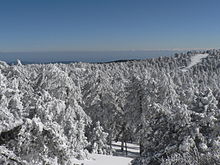
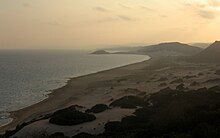
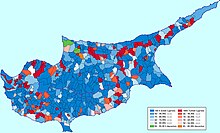
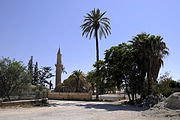
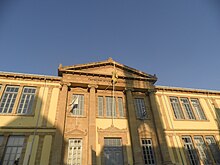










No comments:
Post a Comment